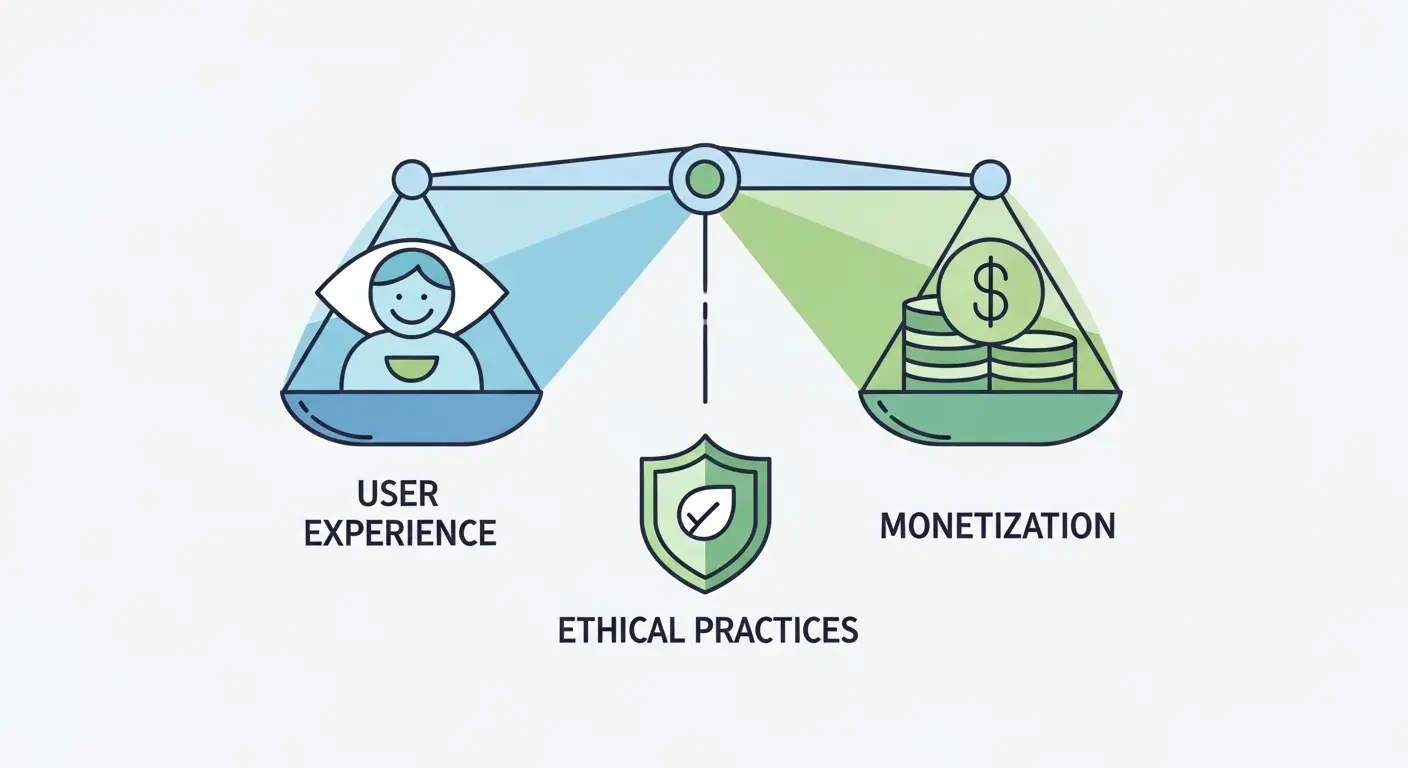Ad Blocking Recovery: Ethical Strategies for Revenue Protection
The rise of ad blockers represents one of the most significant challenges modern digital publishers face. What began as a niche tool for tech-savvy users has evolved into a mainstream practice, with recent statistics indicating that over 42% of internet users worldwide employ ad-blocking software. This isn't just a technical problem; it's a multi-billion dollar hole in the digital advertising ecosystem. For publishers, this trend directly threatens the primary revenue stream that funds content creation, journalism, and online communities. However, declaring an all-out war on users is a losing proposition. The solution lies not in fighting ad blockers, but in understanding them. Ethical ad blocking recovery is a strategic approach that acknowledges user frustrations while implementing sophisticated, respectful methods to protect and reclaim vital advertising revenue. This comprehensive guide will explore the nuances of this approach, from understanding user motivations to implementing technical solutions and adopting a user-centric mindset for long-term sustainability.
The "Why" Behind Ad Blocking: A Signal, Not an Attack
Before diving into recovery strategies, it's crucial to understand why users install ad blockers in the first place. Dismissing them as simply "hating ads" is an oversimplification that misses the point. Ad blocker adoption is a direct response to years of deteriorating user experience across the web. By understanding the core drivers, publishers can address the root cause, not just the symptom.
1. Poor User Experience (UX): This is the single biggest catalyst. Intrusive ad formats have trained users to be defensive. Think of auto-playing video ads with sound that jolt you in a quiet office, massive pop-ups that obscure content, or sticky banners that make mobile browsing impossible. These "bad ads" create frustration and drive users to seek a cleaner, more pleasant browsing experience.
2. Performance and Page Load Speed: Heavy ad scripts, unoptimized creatives, and a multitude of third-party trackers can cripple a website's performance. Users on mobile devices or with slower internet connections are particularly sensitive to this. When ads are the reason a page takes ten seconds to load instead of two, the incentive to block them becomes overwhelming. A faster, ad-free experience is a powerful motivator.
3. Privacy Concerns: In an age of heightened awareness around data privacy, users are increasingly wary of the pervasive tracking that underpins much of the programmatic advertising world. Ad blockers are often seen as a first line of defense against third-party cookies and scripts that collect personal data without explicit consent. As regulations like GDPR and CCPA become more prominent, this concern will only grow, making it essential for publishers to stay informed about the evolving landscape of privacy regulations.
4. Security Risks (Malvertising): Malicious advertisements, or "malvertising," can deliver malware, spyware, or phishing scams through seemingly legitimate ad networks. While relatively rare, high-profile incidents have created a perception of risk, positioning ad blockers as a security tool that protects users from potential threats.
Understanding these motivations reframes the issue. Ad blocking isn't a malicious act against publishers; it's a user's attempt to reclaim control over their online experience. An effective recovery strategy must, therefore, be built on a foundation of empathy and a commitment to improving that experience.
The Two Paths of Ad Block Recovery: A Strategic Overview
When it comes to recovering revenue from ad-blocking users, publishers generally have two distinct philosophical and technical paths they can take. The most successful strategies often involve a carefully calibrated blend of both.
Path 1: The Soft Approach (Permission & Persuasion)
This path is built on dialogue and compromise. It accepts the user's choice to use an ad blocker but seeks to find a middle ground. The core idea is to offer a better, lighter ad experience in exchange for being "whitelisted."
- Acceptable Ads: This is the flagship program for the soft approach. It's a standard for non-intrusive ads that are allowed to be shown to users of major ad blockers like Adblock Plus and uBlock.
- Whitelisting Messages: These are polite, non-intrusive pop-ups or banners that ask users to disable their ad blocker for the specific site, often explaining that advertising funds the content they enjoy.
- Ad-Lite Experience: Some publishers offer a choice: continue with an ad blocker and see limited content, or whitelist the site for full access and a controlled number of light, fast-loading ads.
Path 2: The Hard Approach (Detection & Circumvention)
This path uses technology to bypass ad blockers or gate content until they are disabled. It's a more confrontational approach that can be effective but also carries the risk of alienating users.
- Anti-Adblock Walls: These detect the presence of an ad blocker and react. A "soft wall" might display a persistent message but still allow access to content. A "hard wall" completely blocks access to the content until the ad blocker is turned off for the site.
- Ad Reinsertion (or Ad Recovery): This technology dynamically circumvents the ad blocker by reinserting ads—typically those compliant with the Acceptable Ads standard—into the page from the server side.
- Server-Side Ad Insertion (SSAI): Primarily used for video, this technique stitches the ad creative directly into the video stream on the server. Because the ad and the content are delivered as a single stream, client-side ad blockers cannot distinguish between them and are therefore unable to block the ad.
Choosing the right path—or the right combination—depends heavily on your audience, content type, and brand. A niche site with a loyal, dedicated audience might successfully implement a hard wall, while a general news publisher with high bounce rates would likely see better results with a softer, Acceptable Ads-based approach.
Deep Dive: The Acceptable Ads Standard
For many publishers, the Acceptable Ads program represents the most balanced and sustainable starting point for revenue recovery. Created and managed by Eyeo (the company behind Adblock Plus), it's a standard built on compromise. The initiative recognizes that not all ads are bad and aims to establish a middle ground where publishers can generate revenue without disrupting the user experience.
How It Works
The Acceptable Ads standard is enabled by default in several major ad blockers. This means a significant portion of ad-blocking users are already opted-in to see ads that meet the criteria. To have their ads shown to this audience, publishers must ensure their ad inventory complies with the strict guidelines set by the independent Acceptable Ads Committee.
The Criteria
The standards are designed to eliminate the most annoying and disruptive ad formats. Key requirements include:
- Placement: Ads must not disrupt the natural reading flow of the page. They cannot be placed in the middle of a body of text.
- Size: There are strict limitations on how much screen space ads can occupy, especially on mobile devices.
- Distinction: Ads must be clearly labeled and distinguishable from page content with text like "Advertisement" or "Sponsored."
- No Intrusiveness: All pop-ups, pop-unders, auto-playing video ads with sound, expanding ads, and oversized banners are strictly forbidden.
Getting Compliant
Publishers can apply for inclusion in the Acceptable Ads program directly, but the process can be complex and time-consuming. A more common and efficient route is to partner with a certified technology vendor. These partners have pre-existing relationships and the necessary technology to filter your ad inventory, ensuring only compliant ads are served to users with Acceptable Ads enabled. This approach streamlines the process and leverages expert knowledge to maximize recovery rates.
The primary benefit of Acceptable Ads is that it recovers revenue from a large, addressable audience without confrontation. It aligns the publisher's financial needs with the user's desire for a better experience, turning a potential conflict into a sustainable compromise.
Technical Solutions and Implementation Details
While Acceptable Ads provides a strong foundation, a comprehensive strategy often involves more advanced technical solutions. Here’s a closer look at how they work.
1. Ad Reinsertion / Ad Recovery Technology
This is the technology that powers most modern ad block recovery efforts. It's a sophisticated process:
- Detection: A script on the publisher's website first detects whether a user has an active ad blocker.
- Analysis: If a blocker is detected, the technology identifies which ad requests have been blocked and which ad slots on the page are now empty.
- Reinsertion: The system then makes a new ad request to a dedicated server. This server serves an ad that is compliant with Acceptable Ads standards and uses methods to bypass the blocker's filter lists (such as randomized script URLs or server-side delivery). The compliant ad is then inserted into the empty ad slot.
This process happens in milliseconds and is invisible to the user. The result is that a previously blocked ad slot is now monetized with a user-friendly, non-intrusive ad.
2. Anti-Adblock Walls
Implementing an adblock wall requires careful consideration.
- Soft Wall: This is typically a dismissible modal or a banner. The message might say, "We see you're using an ad blocker. Our content is free thanks to advertising. Please consider whitelisting our site." This is a low-risk way to educate your audience and ask for their support.
- Hard Wall: This is a high-risk, high-reward strategy. The script detects an ad blocker and overlays the entire page, preventing access to the content until the user takes action. The message is more direct: "Please disable your ad blocker to continue reading." This will inevitably increase your bounce rate, but the users who comply will generate full ad revenue. Success with a hard wall is highly dependent on having unique, can't-get-it-anywhere-else content and a loyal user base. Rigorous A/B testing is not just recommended; it's essential. Use a robust analytics guide to track bounce rates, time on page, and conversion rates for whitelisting before, during, and after implementation.
3. Server-Side Ad Insertion (SSAI)
For publishers with significant video inventory, SSAI is the most robust anti-adblock solution available.
- Traditional (Client-Side) Ad Insertion: The video player on the user's device requests the content from one server and the ads from another (the ad server). Ad blockers easily identify and block the request to the ad server.
- Server-Side Ad Insertion: The video player makes a single request to an SSAI server. That server retrieves both the video content and the ads. It then "stitches" the ad creatives directly into the content stream, creating a single, continuous video file that is sent to the user's player.
Because the ad is now part of the core content stream, the ad blocker has no separate ad call to block. This makes SSAI nearly foolproof for monetizing video ads and is a cornerstone of revenue strategies for OTT and other video-heavy platforms.
Building a Holistic, User-Centric Strategy for the Long Term
Ad block recovery technology is a powerful tool, but it's not a silver bullet. The most sustainable and profitable long-term strategy involves looking beyond recovery and focusing on building a monetization ecosystem that respects the user.
1. Prioritize a Flawless User Experience
The best way to combat ad blocking is to give users fewer reasons to install a blocker in the first place.
- Optimize Ad Load: Work with your ad partners to ensure ads are lightweight and load asynchronously, so they don't block the rendering of your content. This directly impacts Core Web Vitals and user satisfaction.
- Thoughtful Ad Placement: Don't just cram ads into every available space. A well-designed user experience can increase engagement with both content and ads. Leverage an ad layout optimization solution to test and deploy layouts that balance revenue with readability.
- Limit Intrusive Formats: Voluntarily eliminate pop-ups, auto-playing sound-on videos, and other annoying formats that are the primary drivers of ad blocker adoption.
2. Strengthen Your Core Ad Stack
Before you can recover blocked revenue, you need to maximize the revenue you're earning from your non-blocking audience. A leaky, inefficient ad stack costs you money every second.
- Embrace Competition: Implement a unified auction solution like header bidding to allow multiple demand partners to bid on your inventory simultaneously. This increases competition and drives up CPMs for every impression.
- Mobile-First Monetization: For mobile web and in-app audiences, the challenges are unique. Ensure your strategy includes solutions specifically for app monetization, which requires a different set of tools and partners. Use a sophisticated ad mediation platform to manage dozens of ad networks and SDKs efficiently, ensuring you always get the highest price for your mobile impressions.
3. Diversify Your Revenue Streams
Over-reliance on programmatic display advertising makes you vulnerable. Explore alternative monetization models that can complement your ad revenue:
- Subscriptions & Memberships: Offer an ad-free experience for a recurring fee.
- Affiliate Marketing: Integrate relevant product recommendations into your content.
- Sponsored Content: Partner with brands to create valuable content for your audience.
- Donations: Allow your most loyal readers to support you directly.
A diversified model makes your business more resilient and gives users a choice in how they support you, which can reduce the adversarial sentiment around advertising.
Common Mistakes to Avoid in Ad Block Recovery
As you develop your strategy, be mindful of these common pitfalls that can undermine your efforts and damage your relationship with your audience.
- Mistake 1: Declaring War on Your Users: Avoid aggressive, shaming, or accusatory language in your adblock messages. Phrases like "Ad Blockers are Killing Our Business" can alienate users. Instead, frame it as a cooperative request: "Please support us by whitelisting our site."
- Mistake 2: A One-Size-Fits-All Approach: The strategy that works for a gaming forum will not work for a national news site. Do not blindly copy another publisher’s approach. Test everything—the messaging, the type of wall (or lack thereof), and the ad experience for whitelisted users—and let the data guide your decisions.
- Mistake 3: Ignoring the Root Cause: If you implement ad reinsertion technology but continue to serve slow, intrusive ads to your non-blocking audience, you are only treating the symptom. You will continue to push more users to install ad blockers, trapping you in a never-ending cycle. Fix the core user experience first.
- Mistake 4: Setting and Forgetting: The ad blocking landscape is dynamic. Ad blockers are constantly updating their filter lists, and new technologies emerge. Your recovery strategy requires ongoing monitoring and optimization. Track your recovery rate, ad block rate, and user experience metrics continuously.
Conclusion: Turning a Challenge into an Opportunity
Ad blocking is not a passing trend; it is a permanent fixture of the digital landscape and a clear signal from users that the old way of doing things is no longer acceptable. Publishers who see it as an existential threat and react confrontationally are destined for a frustrating, uphill battle.
The forward-thinking publisher, however, sees this challenge as an opportunity—an opportunity to build a better, more sustainable ad ecosystem. By focusing on ethical recovery strategies, you can do more than just reclaim lost revenue. You can build trust with your audience, improve your website's performance, and create a user experience that is valuable enough to earn their support. The path to revenue protection is paved with user respect.
Navigating this complex landscape of technology, user sentiment, and monetization strategy can be daunting. If you're ready to build a resilient and profitable ad monetization strategy that respects your users, we encourage you to explore our solutions. To see precisely how our technology can help you recover revenue lost to ad blockers while improving your overall yield, book a demo with one of our monetization experts. Have more specific questions about your unique situation? Don't hesitate to contact our team today.



